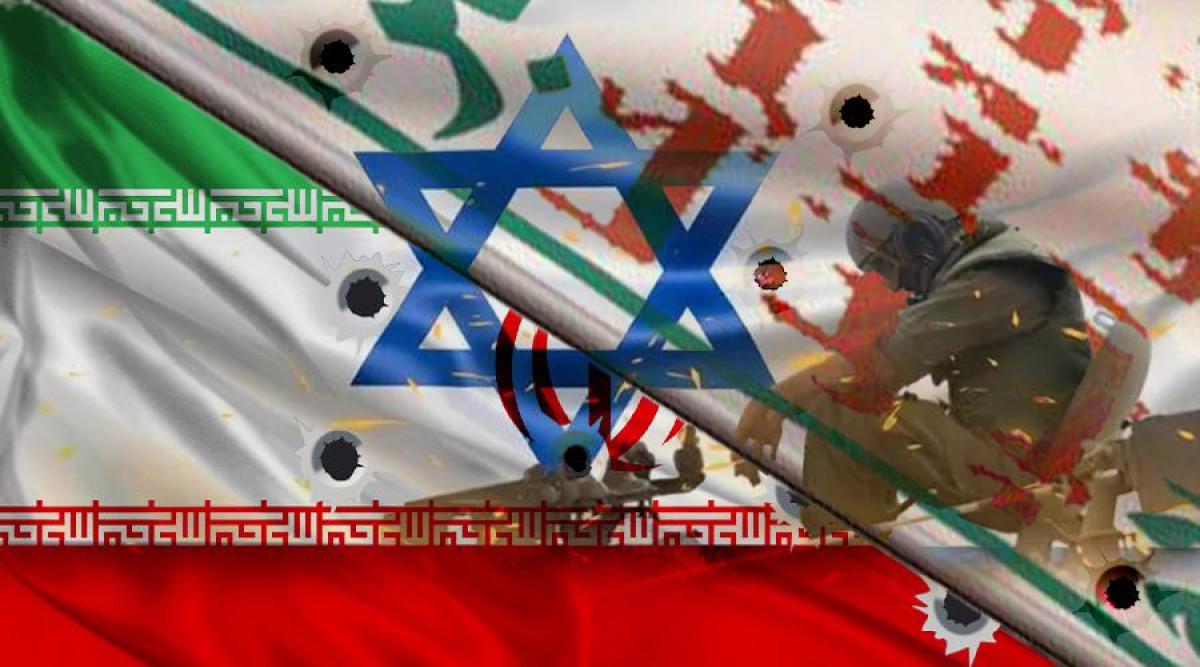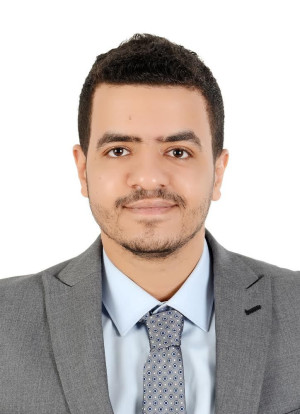The Houthis’ Position on the Iranian-Israeli Escalation
- 23 Jun 2025


As confrontations between Israel and Iran verge on the threshold of open warfare—following Israel’s large-scale offensive on 13 June, which targeted nuclear and military facilities and culminated in the assassination of several senior Iranian commanders—the Middle East stands precariously close to a new phase of volatility, marked by far-reaching repercussions and scenarios shaped by chronic instability.
Within this volatile landscape, urgent questions have emerged concerning the position of Yemen’s Houthi movement regarding the current escalation phase. These questions have gained heightened significance in recent months, as the Houthis have positioned themselves as an active front in the confrontation with Israel, amid enduring ties of strategic alignment and ideological subordination to the Iranian regime.
This paper aims to address these questions by analysing the key characteristics underpinning the group’s engagement with the latest developments and exploring the strategic and ideological factors shaping its approach to the ongoing escalation cycle.
First: How Have the Houthis Responded to the Current Escalation?
The Houthi movement in Yemen has solidified its position as one of the principal pillars of the so-called "Axis of Resistance," particularly through its sustained military escalation against Israel since the launch of Operation Flood of al-Aqsa on 7 October 2023. This front has assumed increasing strategic importance, as it remains the only arena where the trajectory of confrontation with Israel is still unfolding. The group has consistently adhered to what it terms a “policy of support for Gaza,” positioning itself as an active participant in the broader confrontation.
Within this framework, several defining features have emerged in the Houthis’ approach to the ongoing Iranian-Israeli escalation, which can be summarised as follows:
Although these statements coincided with reports of Israeli intentions to strike Iran, they appear to have been primarily driven by local dynamics on the Houthis’ front with Israel. Several indicators support this interpretation. The remarks followed intense Israeli attacks on the Port of Hodeidah (2), during which Tel Aviv employed naval missiles for the first time. They were also issued shortly after threats from Israeli Defence Minister Yoav Gallant to impose a naval and aerial blockade on Houthi-held territories (3). This context suggests that the Houthi rhetoric was largely reactive—prompted by Israeli actions and aimed at bolstering morale among the group’s support base. While prior Houthi attacks may have yielded some symbolic impact on Israel, they have not resulted in significant casualties. Thus, the group appears keen to signal that it retains untapped military capabilities that could pose a more substantial threat.
He further welcomed the widespread condemnation by Arab and Islamic countries of the Israeli strikes, describing it as “a positive and commendable step,” and called for “political, media, and all forms of support to be aligned with the Islamic Republic, which is the party under attack.” Al-Houthi also cautioned that “an assault on Iran carries consequences for the entire region.”
In parallel, the Houthis’ Supreme Political Council issued a strongly worded condemnation of what it termed “the flagrant Zionist aggression against the Islamic Republic of Iran.” The statement reaffirmed Iran’s right to deliver a deterrent response to what was described as “reckless aggression.” It framed the Israeli strikes as a consequence of Iran’s principled and steadfast support for the Palestinian cause (5).
In a related development, senior Houthi figure Mohammed al-Bukhaiti stated on 17 June that the group would intervene in support of Iran against Israel, just as it had previously intervened in support of the Palestinians in the Gaza Strip (6). He also referenced ongoing coordination with Tehran amid its continued military escalation with Israel. In a similar vein, Mahdi al-Mashat, head of the Houthis’ Supreme Political Council, asserted that “Iran has the full right to target the interests of any country that collaborates with the Zionist enemy in its acts of aggression,” as he put it. He added that “Iran is not an easy target; it possesses sufficient capabilities to respond and enjoys extensive relations and agreements with many countries,” (7). according to statements disseminated by Houthi-affiliated platforms.
These statements reflect several key implications, particularly regarding the delayed activation of the Houthi “card” during the current escalation. This delay appears consistent with Iran’s prevailing strategy, which may be described as “calibrated and incremental deployment of pressure instruments.” These instruments include a network of aligned armed groups across the region, foremost among them the Houthis. In this context, Iran appears to be deliberately withholding the activation of such proxies to preserve them for use in subsequent phases of the confrontation.
The significance of this operation rests on several key considerations. First, it marked Israel’s initial direct military action against the Houthis since the onset of the current Iranian-Israeli escalation. Second, it constituted Israel’s first known attempt to assassinate a senior Houthi military figure. Third, the operation appears to have been designed to achieve one of two objectives: either Israel had acquired actionable intelligence regarding the whereabouts of senior Houthi leadership and sought to capitalise on this window of opportunity, or it intended—through the strike—to provoke a retaliatory escalation by the Houthis in concert with Iran, thereby increasing pressure on the United States to intervene more decisively in the ongoing confrontation.
Second: Determinants Shaping the Houthis’ Position
As of the time of writing, the Houthi movement has adopted a largely cautious posture regarding the ongoing escalation between Israel and Iran. This stance is informed by a series of key considerations and underlying determinants, which can be summarised as follows:
Overall, the extent of Houthi involvement in the ongoing escalation between Iran and Israel is likely to remain contingent upon several key factors—chief among them the degree of direct US engagement in the conflict and Iran’s capacity to absorb pressure without resorting to the full mobilisation of its regional assets, foremost among which are the Houthis. What remains certain, however, is that should Iran reach a critical threshold of pressure and attrition, it is likely to activate all of its proxies and instruments, perceiving the conflict at that stage as an existential struggle for the survival of the regime in Tehran.
(1) الحوثيون يلوحون بصواريخ أكثر خطراً على إسرائيل، الشرق الأوسط، 11 يونيو 2025، متاح على:
https://linksshortcut.com/PKqFS
(2) الجيش الإسرائيلي يعلن شن سلاح البحرية هجمات على ميناء الحديدة، سي إن إن، 10 يونيو 2025، متاح على:
https://arabic.cnn.com/middle-east/article/2025/06/10/idf-announces-its-navy-launched-attacks-port-of-hodeidah
(3) إسرائيل تحذر الحوثيين من حصار بحري وجوي إذا استمرت هجماتهم على أراضيها، فرانس 24، 10 يونيو 2025، متاح على:
https://linksshortcut.com/ozAdD
(4) أول تعليق من عبدالملك الحوثي على الضربة الإسرائيلية بإيران، سي إن إن، 15 يونيو 2025، متاح على:
https://arabic.cnn.com/middle-east/article/2025/06/15/abdulmalik-houthi-first-reaction-israel-strike-iran-viral-social
(5) موقف الحوثيين من التصعيد الإيراني الإسرائيلي، الجزيرة، 14 يونيو 2025، متاح على:
https://linksshortcut.com/twNAc
(6) "أنصار الله تتوعد: سنقاتل مع إيران كما قاتلنا مع غزة، الجزيرة، 18 يونيو 2025، متاح على:
https://linksshortcut.com/tvXFR
(7) الرئيس المشاط: لإيران الحق في ضرب مصالح أي دولة تعتدي عليها، قناة المنار، 17 يونيو 2025، متاح على:
https://www.almanar.com.lb/article/24742/
(8) Israel attempts to assassinate Houthi military chief in Yemen airstrike, Ynet, Jun 15, 2025, available at:
https://www.ynetnews.com/article/r1jrnpixgl
The stated views express the views of the author and do not necessarily reflect the views of the Center or the work team.
Comments